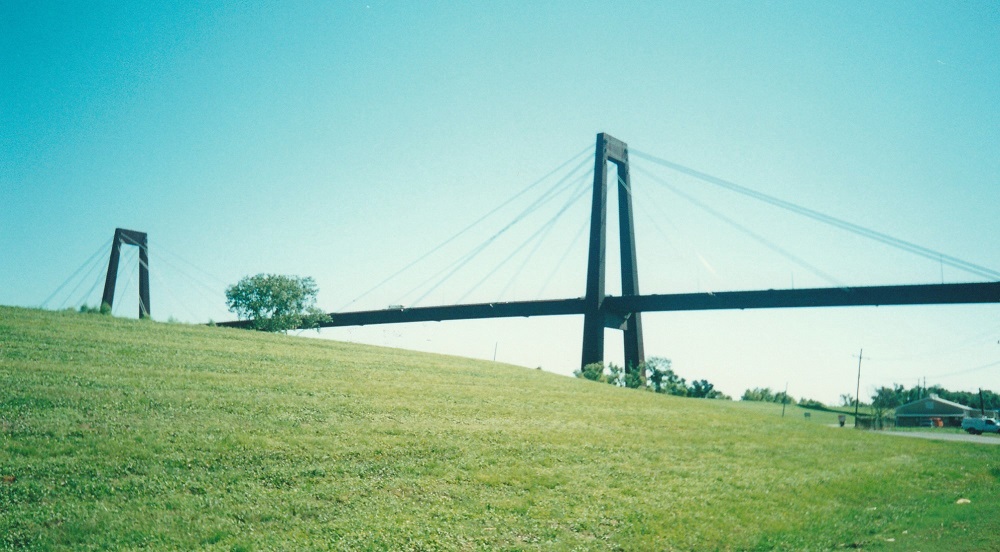
Again, we slept in. Sunday had been a long day. Then we had breakfast at Cafe Du Monde again, and hit the road for Baton Rouge.
The plan this day was to see two more plantations. One was in Baton Rouge, and we went there first. Oops. Should have read the fine print - it was closed on Monday. So we headed on back to the next one, stopping on the way for lunch at a roadside place called the Lagniappe Cafe (pronounced - approximately - lan-YAP).
Along the way we passed this bridge over the Mississippi:

I took the picture just because I found the bridge interesting. I'd never seen a suspension bridge with the cables arranged like that. (I have since then.)
Another random interesting sight along the way:
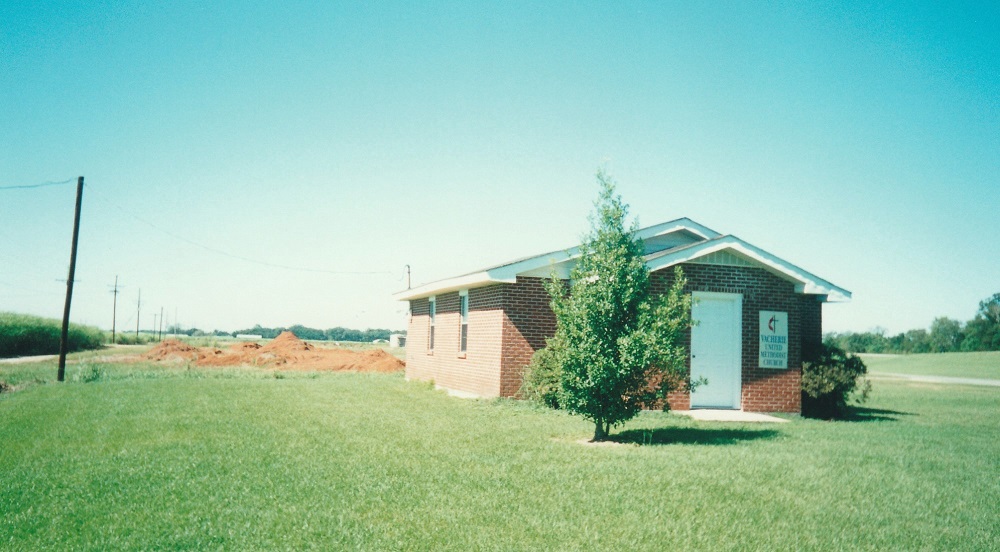
This church fascinated me because of its small size. In the picture, you can't really tell how small it is - it looks like it wouldn't hold more than a dozen or so people.
Anyway, we got to Nottaway, along the River Road about twenty some miles outside of Baton Rouge. This is one of the better known plantations in the area. It's not a Creole plantation - you'll notice the absence of bright colors, and the normal size windows. It does face the river, though.
Nottaway is famous for its size and opulence. Its original owner was very wealthy, and built himself a veritable palace. It also had a number of features which were quite "high tech" for its day. Today, in addition to offering the usual tours, the house is maintained as a bed and breakfast. Also, the last owner of the house still lives there - she sold it to the developers with the stipulation that she would be able to live there for the remainder of her life. She runs the gift shop.
The next few pictures were taken in and around Nottaway:

The big house, rear entrance

The big house, front entrance, with the lady of the house - and her dog
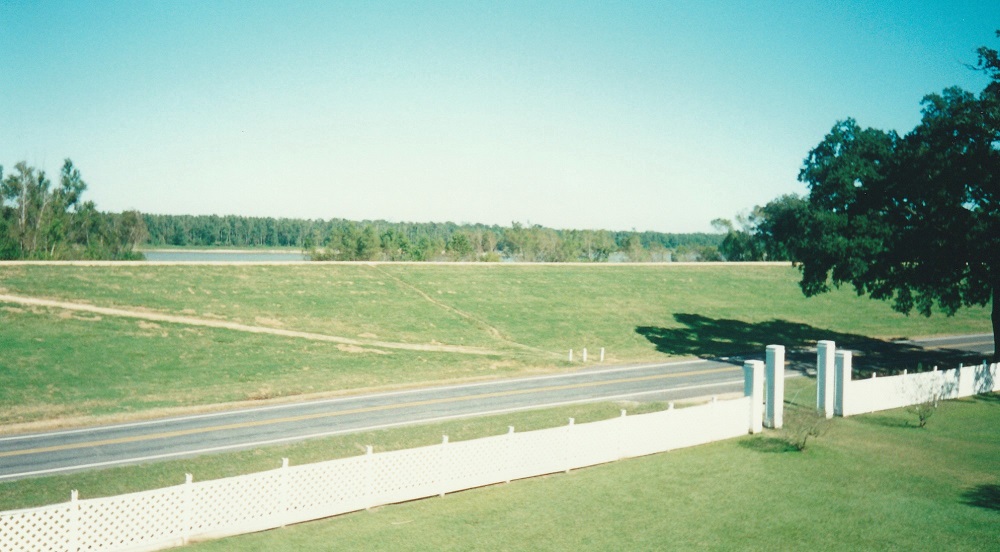
The river from the front porch
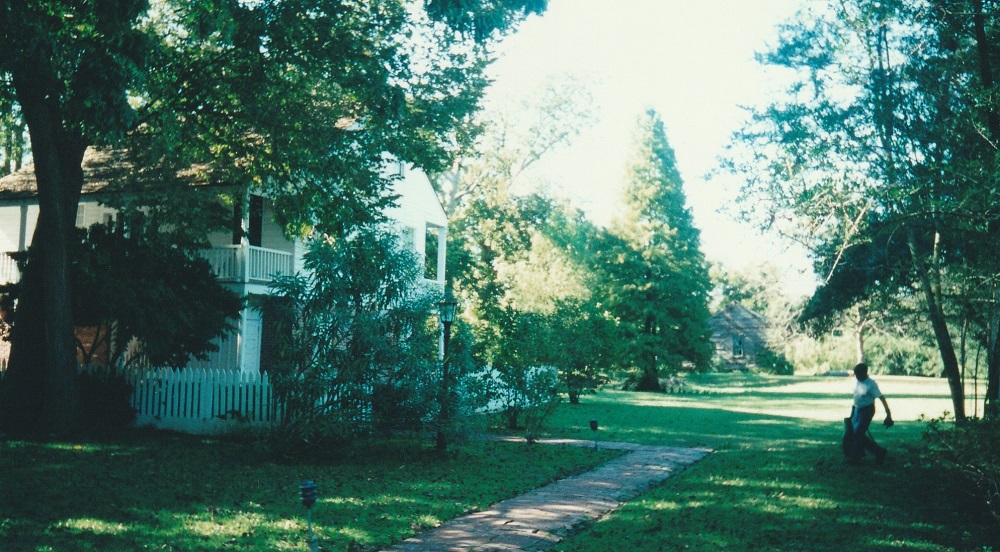
The grounds
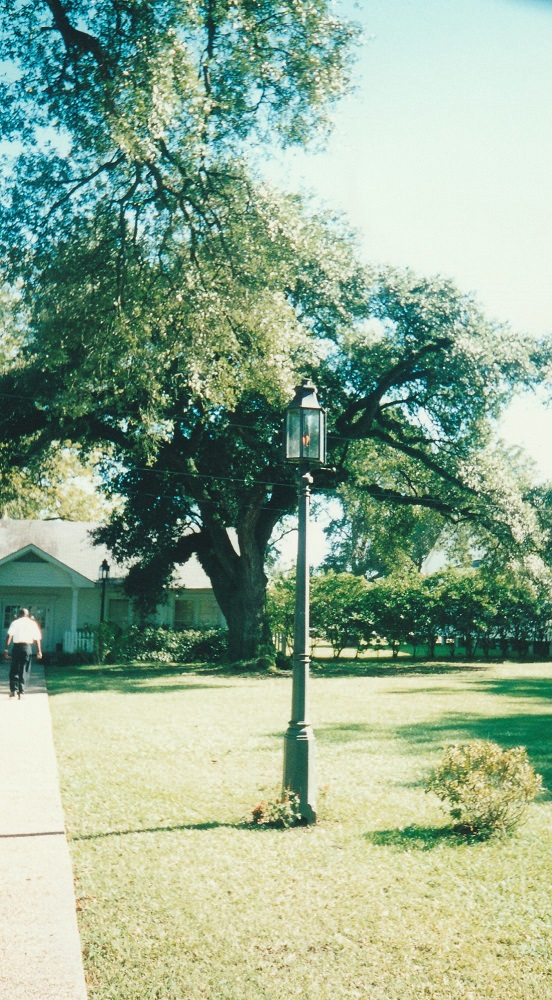
A gas lamp - look close; that's not an electric bulb, it's a real live gas flame
Here's an example of one of the aforementioned "high tech" features. This series of bells, each with a different pitch, were mounted above the kitchen doors. Each room in the mansion had a bell pull which connected with one of these bells. From the pitch of the bell, the slaves knew exactly which room they were being called to.
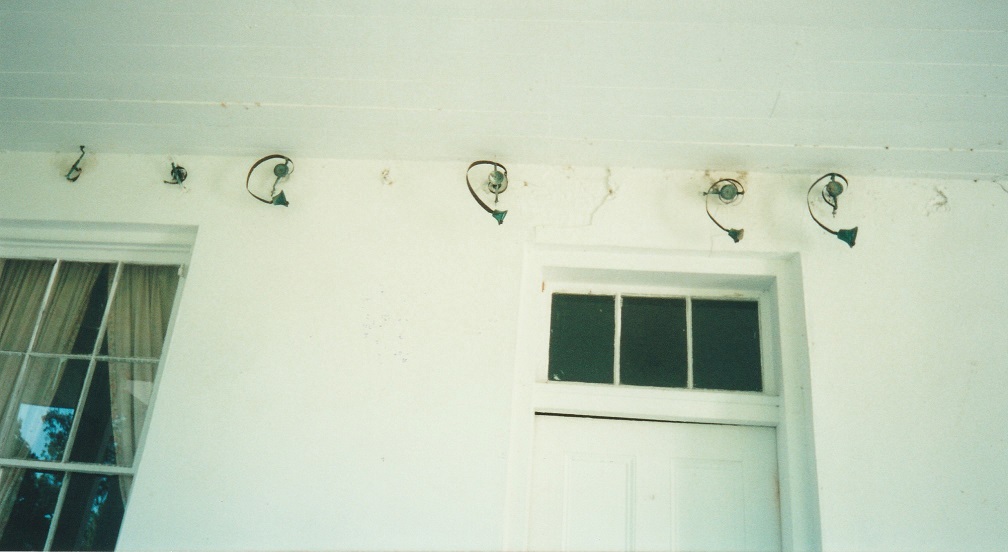
After the tour, we drove back to N.O., never to roam again. We had pre-dinner refreshment at Mike Anderson's, a seafood restaurant in the Quarter. They have oysters on the half shell for 25 cents each (well, actually $3 per dozen). Terry ate the oysters; I had a shrimp cocktail. We also shared a plate of Oysters Rockefeller. Then we went to dinner at a restaurant called Petunia's. Their specialty is crepes. We each had one. Mistake. We should have split one - they were beyond huge.
We then went back to the Haunted History Tours to take another tour. This one was a ghost tour; the guide took us around to various haunted and haunting sites, and told us ghost stories. It was fascinating. Along the way, Terry and I were talking about to what extent the stories were credible. Of course, we're both hardened skeptics. But the stories were told quite believably. In the end, we decided to stop analyzing and just go with it and have fun. As I put it, "This may be bullshit - but it's good bullshit!"
One of the stops on the tour was The Cornstalk Fence. We had already seen this on our carriage tour, and our walking tour. Apparently, the house was originally built by a businessman who had moved here with his wife from the cornfields of Iowa. His wife was homesick, so he had the fence specially built for her. According to Mike, some tourists have reported taking pictures of the fence, and discovering that in the pictures, ghostly faces were peering out from behind the fence. Of course, no such faces can be seen here - ghosts never seem to manifest for skeptics...
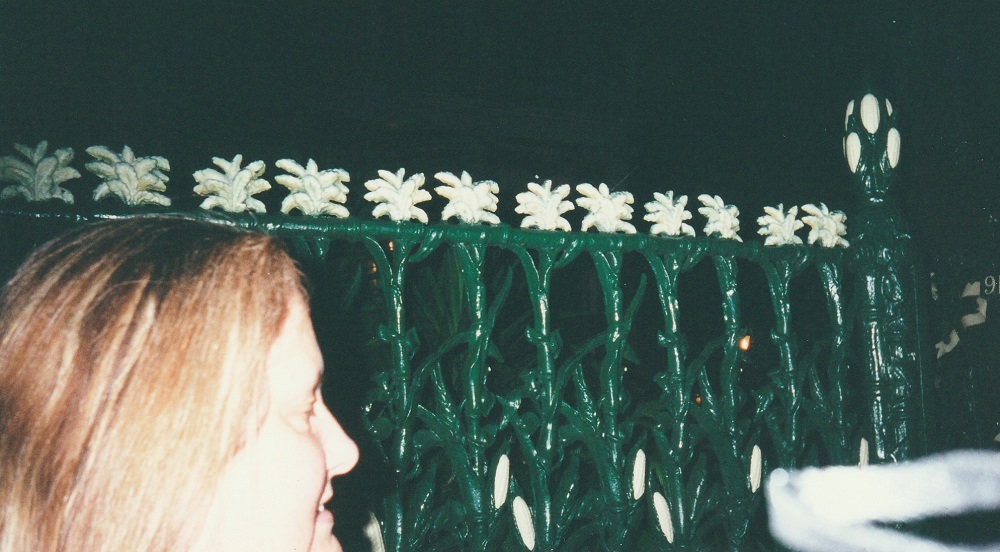
Another story about this place is more likely true. For some years now, it has been a hotel. At one time in the 1950's, the Kennedy family of Massachusetts, including young Master Jack, stayed there. At the same time, just a few blocks away, a young man named Lee Harvey Oswald was going to school. Creepy.
The creepiest thing on the tour, though, was the alley pictured here:
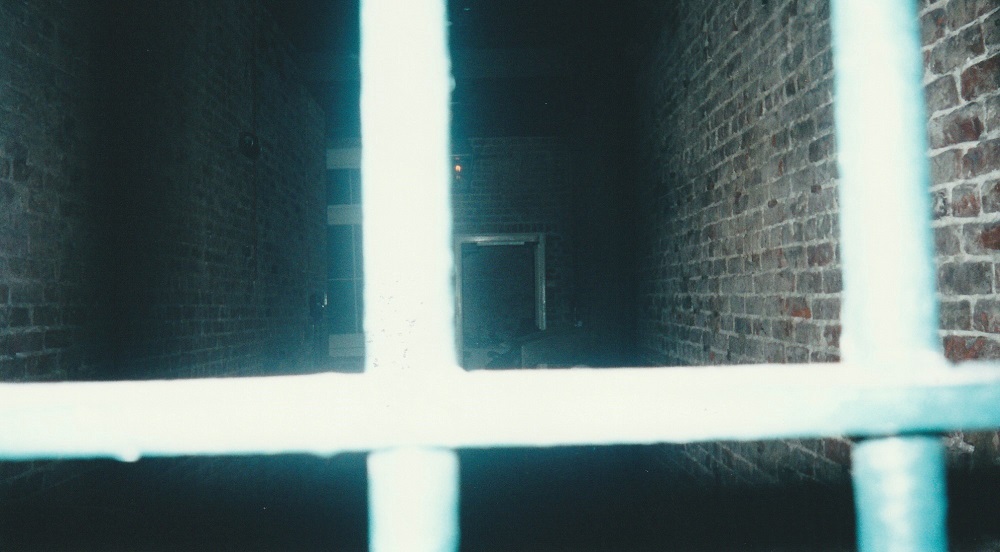
This alley used to be used for slave auctions. The wooden blocks in the walls (you can see two of them just to the left of the rightmost vertical bar) were where the shackles were attached. According to the guide, some tourists have reported putting their hands through the bars, and feeling invisible hands grasp their arms. Of course, I tried it. Of course, nothing happened.